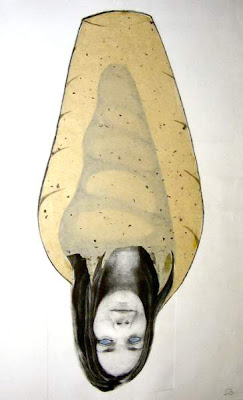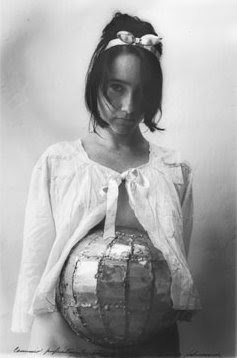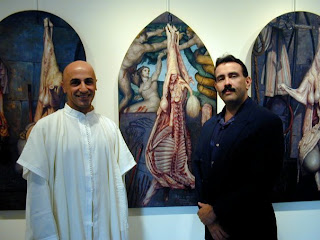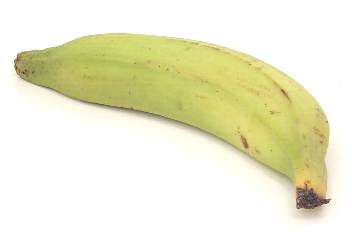Aqui Estamos comes to Philly
As I've written many times, as result of the decades-long Cuban embargo, the work of contemporary Cuban artists has been noticed for many years by many important museums and curators around the world, but often remains a mystery to American collectors and art enthusiasts. And those who write about the commoditization of art, such as the Wall Street Journal, have been telling art collectors who buy art in the hope those prices will rise, to buy contemporary Cuban art.
The WSJ wrote:
"With art from Asia and Russia in demand, some in the art world are betting on Cuba to be the next hot corner of the market. Prices for Cuban art are climbing at galleries and auction houses, and major museums are adding to their Cuban collections. In May, Sotheby's broke the auction record for a Cuban work when it sold Mario Carreño's modernist painting "Danza Afro-Cubana" for $2.6 million, triple its high estimate.
Now, with a new president in power and some hope emerging for looser travel and trade restrictions between the U.S. and Cuba, American collectors and art investors are moving quickly to tap into the market. Some are getting into Cuba by setting up humanitarian missions and scouting art while they're there. Others are ordering works from Cuba based on email images and having them shipped.
The collectors are taking advantage of a little-known exception to the U.S. trade embargo with Cuba: It is legal for Americans to buy Cuban art."
This suggestion and idea is simple, and has been proven recently by the super hot rise of Chinese artists: when a closed society is opened up a little, its top artists see a substantial rise in exposure and thus in demand, and of course, in prices!
And it makes sense (if you buy art as an investment strategy rather than love of art).
Generally speaking, when an artist is in certain major collections around the world, such as the Museum of Modern Art in New York, the Museum of Fine Arts in Boston, the Tate in London, and other such giants of the museum world, it attracts a certain level of collector interest, and it is almost always associated with a certain price range.
And there are many contemporary Cuban artists whose work has been in those and many other important museums around the world for a very long time, and whose work continues to attract curatorial, critical and savvy collector interest, but because of their lack of exposure to the American market in general (often created by their closed societies), their price range is not in par with their colleagues from other nations in the same level.
Several years ago, almost by accident, I became involved in the curatorial process of contemporary Cuban art, in an effort to help with fundraising efforts by the Havana Hebrew Community Center. Since then I have become an experienced curator in this genre and have acquired a wealth of good knowledge about the artists from that unfortunate and imprisoned island.
Aquí Estamos (Here We Are) is my latest curatorial project and after an initial showing in Norfolk, Virginia, it traveled to to
H&F Fine Arts and the Greater Washington, DC region and now travels to Philadelphia's
Projects Gallery with an exhibition of recent work by several important Cuban artists working out of Havana as well as Cuban artists from the Cuban Diaspora.
How can this be done?
It’s a brutal, labor intensive touch and go process, as although art and books are the only two items exempt from the Cuban embargo, the heavy hand of the Communist dictatorship that runs everything on that unfortunate nation touches all aspects of life, including the creation and destination of art. Bypassing and escaping the government is not easy, but it can be accomplished if the artist is willing to risk it.
In the works that you’ll see at
Projects Gallery we find narratives and imagery that represent many of these artists’ historical dissidence to the stark issues of contemporary Cuban life. The works are images that offer a historical and visual sentence in the history of an island nation behind bars with a powerful world presence in the arts and events of world history.

In Sandra Ramos’ works we see one of the most important contemporary Cuban artists in the world continue to visit themes dealing with racism in her homeland, the physical and intellectual drain caused by mass migration, and other austere realities of daily Cuban life. Ramos uses her body and her figure in many of her paintings and mixed media etchings to narrate the daily issues that confront her life in Havana. In her drawing "Larva," Ramos anticipates a future Cuba where she may be allowed to spread her artistic wings to full capacity, without fear of how her visual imagery may be interpreted by her own government.
Maria Magdalena Campos-Pons, who escaped from Cuba in the early 1990s, also uses her image and body to deliver powerful biographical and observational elements of the realities of being a black Cuban woman in America. She has been called “one of Boston’s most prominent artists,” and as evidence it has been submitted that the Cuban-born artist has shown at New York’s Museum of Modern Art, Minneapolis’s Walker Art Center, the Smithsonian, the Venice Biennale, and many other prestigious venues around the world.
And last year the Indianapolis Museum of Art hosted “Everything Is Separated by Water,” a mid-career retrospective of Campos-Pons’ paintings, sculptures, photos, and installations. And as an Afro-Cuban woman, Campos-Pons has used her cultural and racial background as the initial key theme of her own work, with long ties to her Cuban homeland, but also with a powerful influence of her evolving Americanosity.

"Consume preferably before age 30." Gelatin Silver Print. Cirenaica MoreiraBoth Cirenaica Moreira and Marta Maria Perez Bravo also employ their bodies to become the canvas of their photographs, although in each case with a different goal. Moreira has been called “woman as vagina dentata” for the ferocity via which her images depict her themes of loss of freedom, feminism, and being a Cuban woman in a land of unabashed machismo.

Perez Bravo is considered by many to be the preeminent Cuban female photographer in the world, and her work addresses the fabulous rituals and images of Santeria, the unique Cuban mixture of Catholicism and African religions brought to the island by African slaves.
Kcho (Alexis Leyva Machado) is also considered by many to be among the leading Cuban artists in the world, and he first attracted international attention by winning the grand prize at South Korea's Kwangju Biennial in 1995.
Other artists in the show include work by Alejandro Mendoza (winner of the Best in Show 2006.
IX Exposición de Arte Latinoamericano y del Caribe, Museum of the Americas) and
Alex Queral. Also
Roberto Wong, whose powerful paintings develop intelligent ways to showcase ways in which freedom is restricted and Aimeé Garcia Marrero, considered by many to be among Cuba’s most talented new crop of painters. Her technical skills are married to intelligent interpretations of daily Cuban life and even the influences of the giant to the North.

"Concavo" Digital Print by Aimee Garcia MarreroThe opening, free and open to the public is on May 1st, 2009 from 6-9PM.
Projects Gallery is located at 629 N 2nd Street, Philadelphia, PA 19123, tel: 267.303.9652 and on the web at
projectsgallery.com. The exhibition is open through May 29, 2009.
 In Marc Augé’s Non-Places: Introduction to an Anthropology of Supermodernity (1995) he coined the phrase "non-place" to refer to spaces of transience that do not hold enough significance to be regarded as "places." Young says, “We survive with the greatest of ease in non-places. That is the point. There is no need to travel from village to village when one store has everything we need. The non-place neutralizes individuality. ‘Place’ is filled with history and identity. Non-place is void of history and identity.”
In Marc Augé’s Non-Places: Introduction to an Anthropology of Supermodernity (1995) he coined the phrase "non-place" to refer to spaces of transience that do not hold enough significance to be regarded as "places." Young says, “We survive with the greatest of ease in non-places. That is the point. There is no need to travel from village to village when one store has everything we need. The non-place neutralizes individuality. ‘Place’ is filled with history and identity. Non-place is void of history and identity.”


























